Learn to Play Chords on the Bass – Part 3 – Triads
In this video lesson you’ll learn how to play triads on bass guitar. There are four different types of triad. I’ll explain what they are and then how to play them.
Triads, what are they and how do you play them?
In part 3 we’re going to look at how to play triads on the bass. They are simple three note chords that form a foundation for a lot of extended harmony. Before we can go on to explore chord extensions it’s really important to understand triads.
There are essentially four types of triad. Major, minor, diminished and augmented. So, example 1 contains an example of each triad. In this example they all have the root note C.
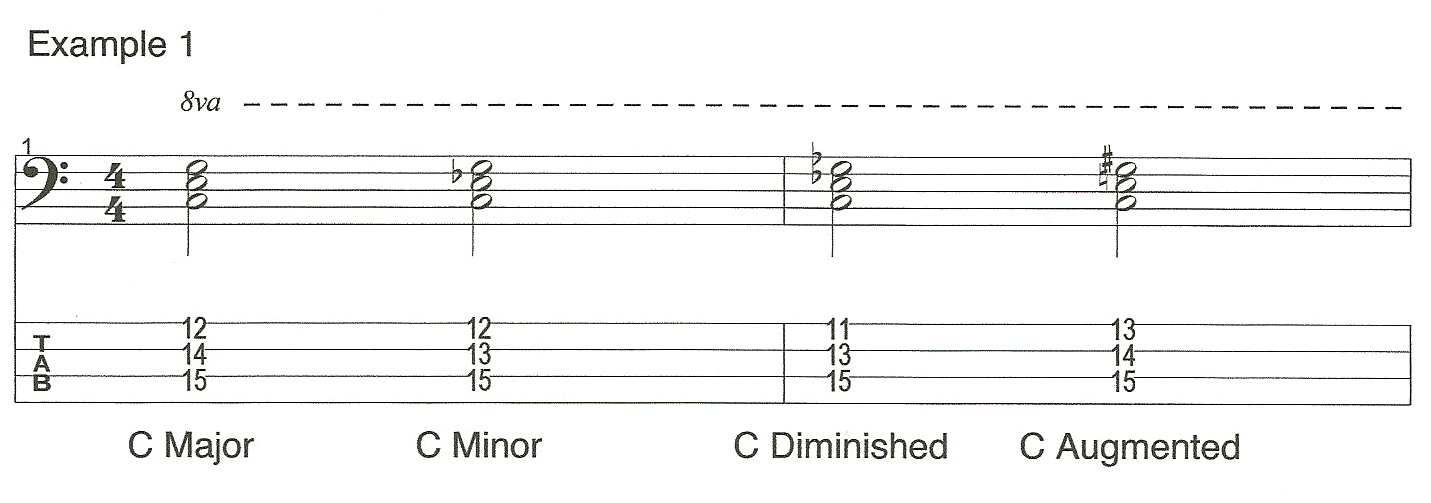 Of these four, major and minor are by far the most common and will be the ones we use the most.
Of these four, major and minor are by far the most common and will be the ones we use the most.
Harmonising scales using triads
We can harmonise scales into triads. In part one we harmonised scales into intervals of a third. A triad is two intervals of a third stacked together. By which I mean, you take a root note, find a note that is a third above it and then another note which is a third above again. The three notes of a triad are often referred to as the root, the third(an interval of a third above the root) and the fifth (an interval of a third above the third and an interval of a fifth above the root).
You’ll find that when you harmonise a major scale into triads you’ll get seven chords, three major (chords I, IV & V), three minor (chords II, III and VI) and one diminished triad (chord VII). In example 2 there’s a G major scale harmonised into triads played in root position. Meaning that the root note is the lowest of the three notes.
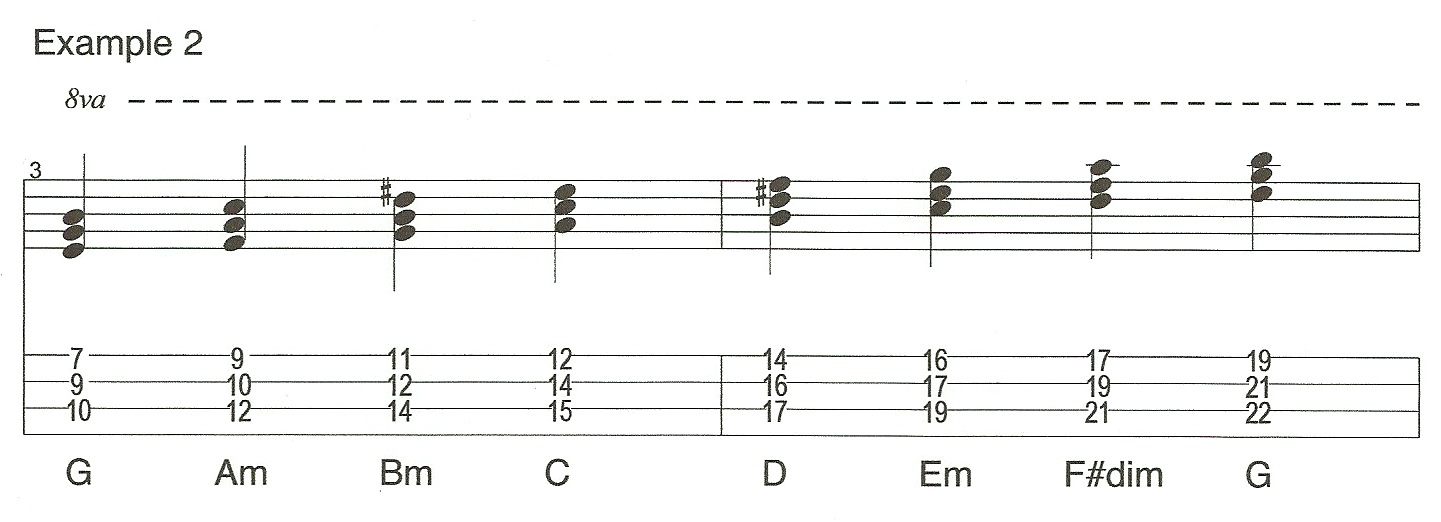 In the previous example we refer to these chords as root position because we’ve arranged each triad in a neatly stacked order with the root at the bottom and the third and the fifth stacked on top of it. If we change the order of these notes to make either the third or the fifth the lowest note then we have what we call an “Inversion”. There are only two possible ways to invert a triad. First of all put the third at the bottom as in Example 3.
In the previous example we refer to these chords as root position because we’ve arranged each triad in a neatly stacked order with the root at the bottom and the third and the fifth stacked on top of it. If we change the order of these notes to make either the third or the fifth the lowest note then we have what we call an “Inversion”. There are only two possible ways to invert a triad. First of all put the third at the bottom as in Example 3.
Triad inversions
Then put the fifth at the bottom as in Example 4.
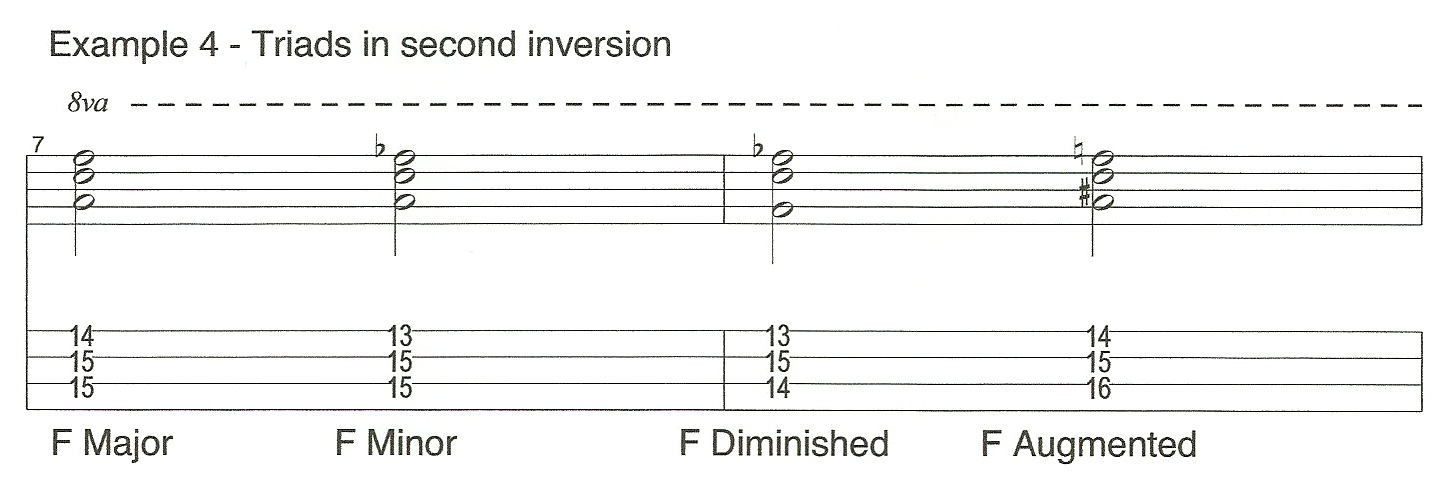 Example 5 is an E major scale harmonised in first inversion triads.
Example 5 is an E major scale harmonised in first inversion triads.
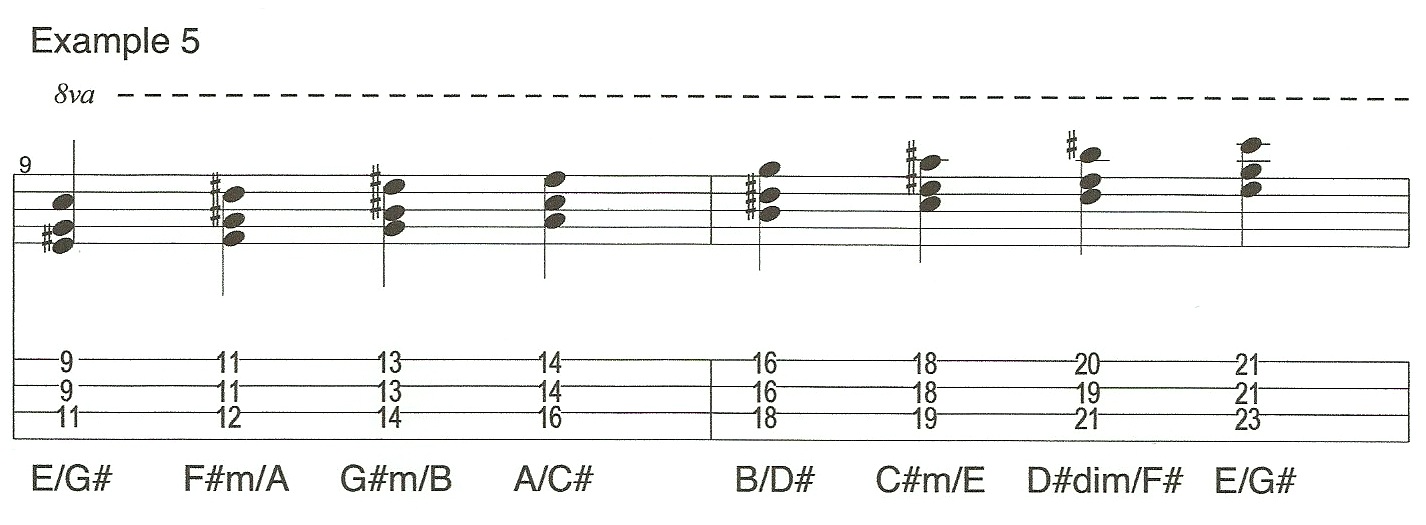 Finally example 6 is a D major scale harmonised using the second inversion.
Finally example 6 is a D major scale harmonised using the second inversion.
Harmonising minor scales
If you harmonise a melodic minor scale into triads you get two minor chords, two major chords, two diminished chords and one augmented triad. So, in example 7 there’s a G melodic minor scale harmonised using root position triads.
Now move on to Playing Chords on the Bass – Part 4 – Chord Extensions. You’ll learn how we can add extensions to the triads so you can make more interesting sounding chords.

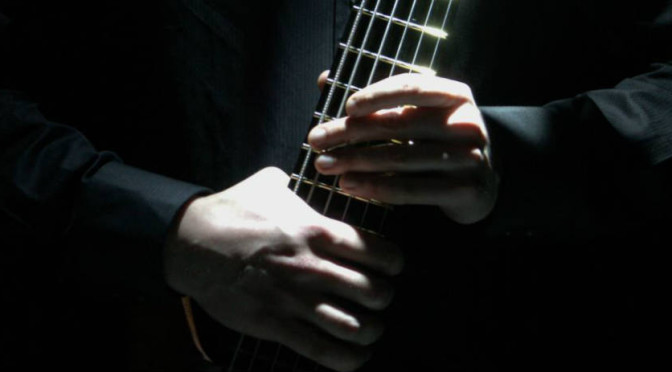
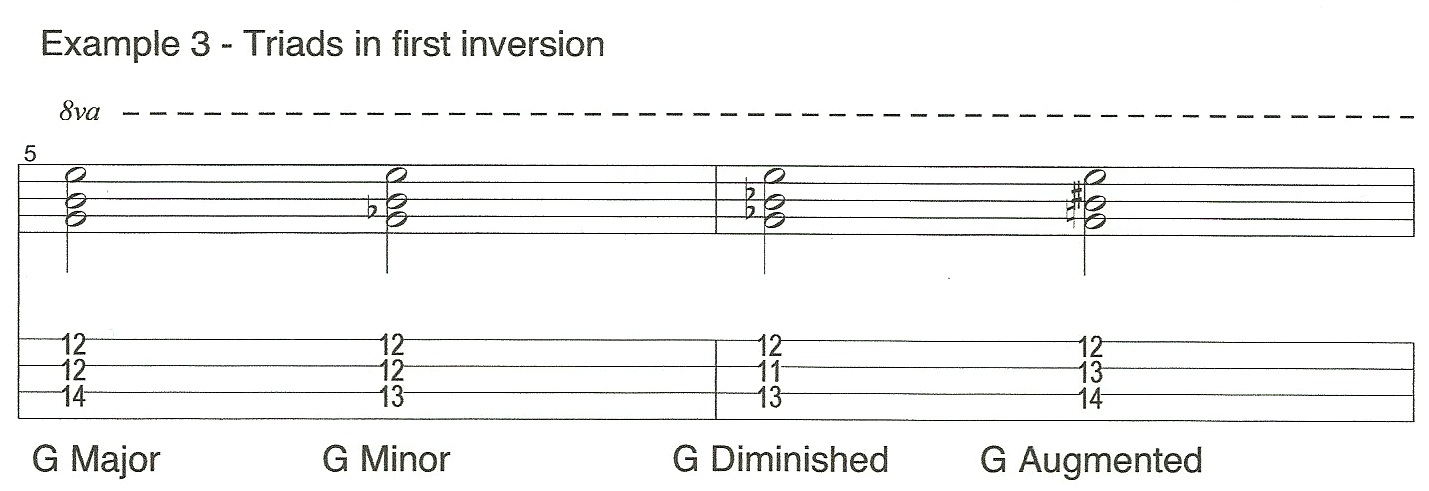
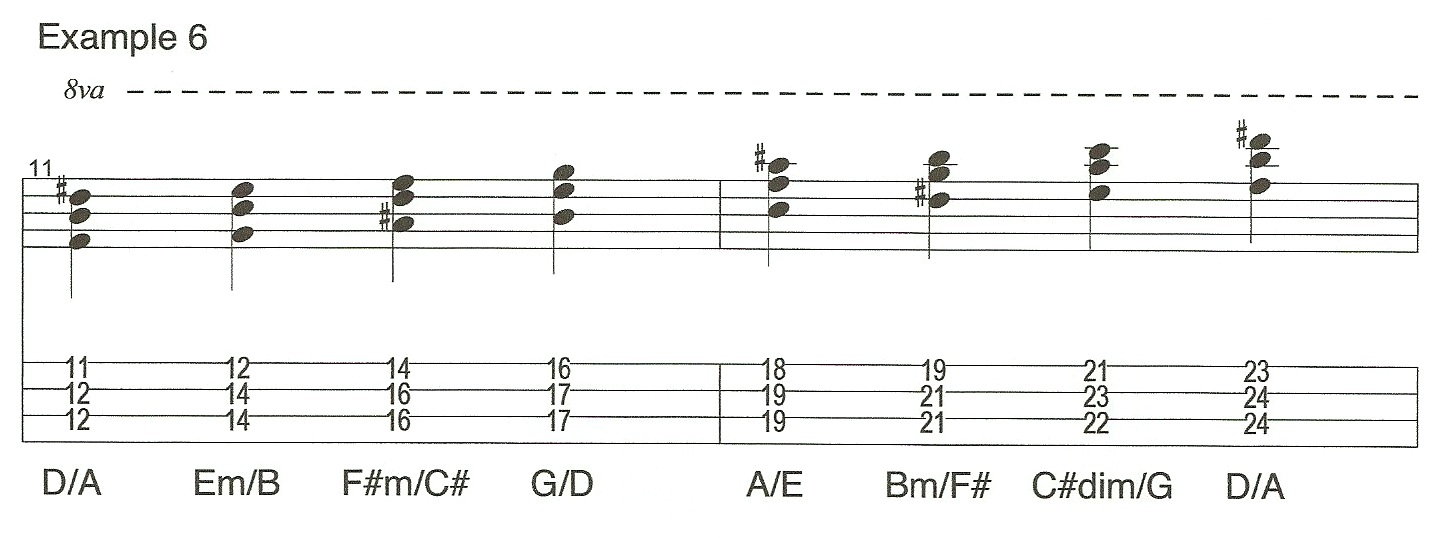
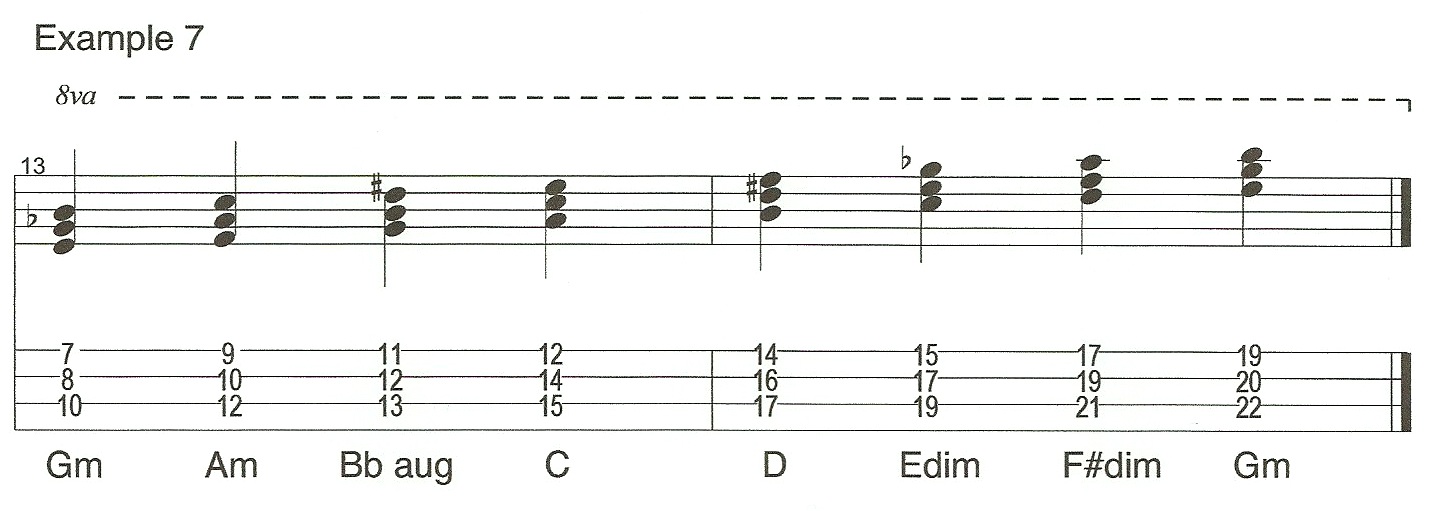
One thought on “Playing Chords on the Bass – Part 3 – Triads”
Comments are closed.